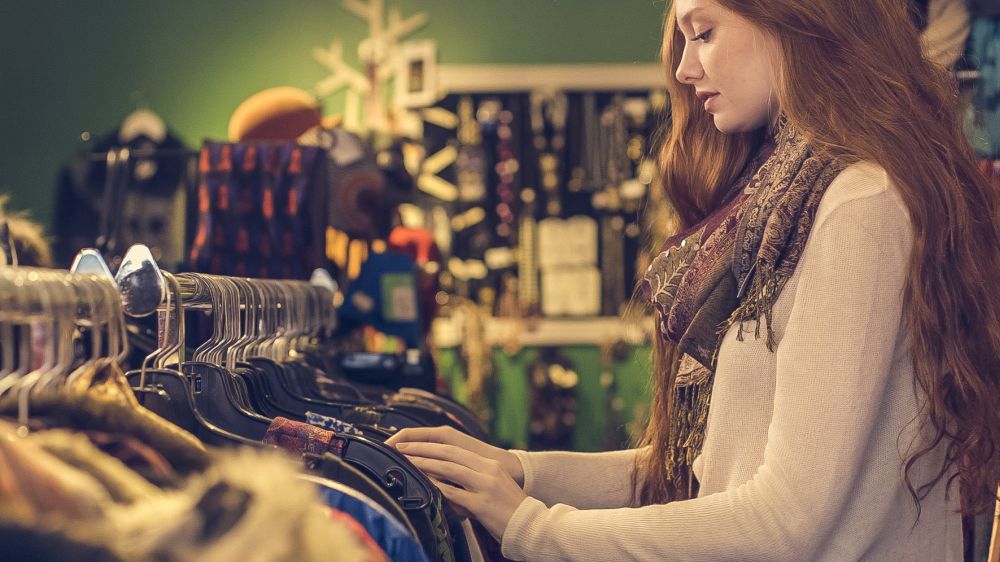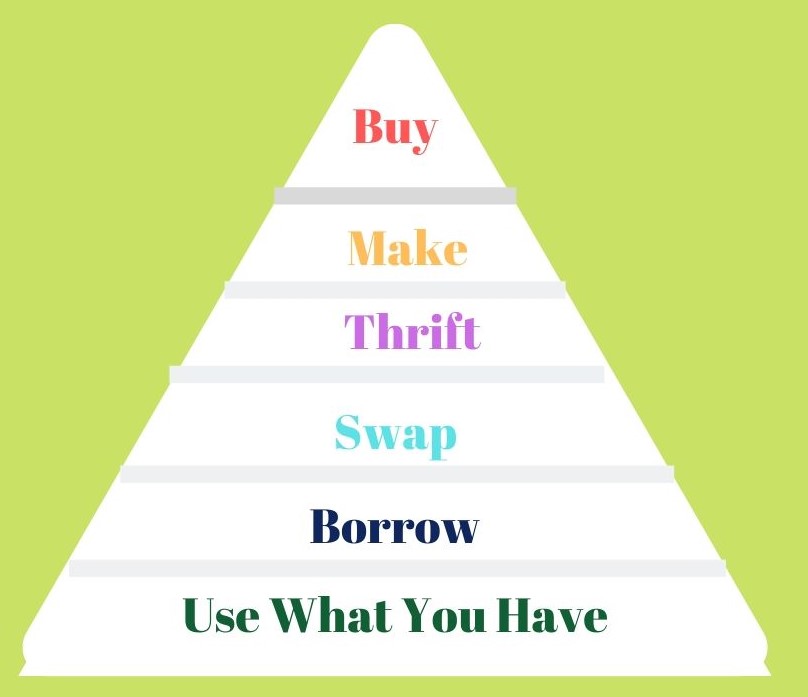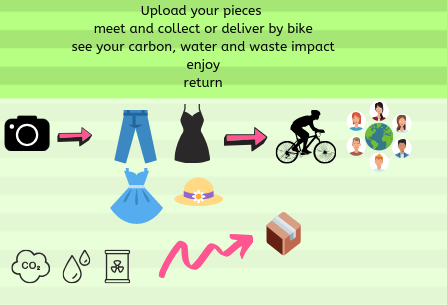For everyone passionate about shopping, but torn between the joy of wearing a new piece and the wider impact consumerism has on the planet, here’s a look at how to make your wardrobe more sustainable by using a zero waste approach. We’ll dive into the environmental impact of the fashion industry and share a few tips on how to buy and swap more sustainably and guilt-free.

Fight that compulsive buying instinct
They say less is more but for some reason we are constantly pushed by the desire of always wanting a little bit more, so much so that – in the western world – the compulsive buying disorder became a real issue, often underestimated. Compulsive buying disorder might seem a bit of a dramatic term, but if we look carefully, way more people than we are comfortable to admit, are affected by it.
70%-off sales and “unmissable” deals are an everyday thing now and we are more and more driven by the “fear of missing out” (FOMO) when we face the choice to either “take it” or “leave it”. As a result of that we end up buying more and more, just for the sake of doing it; and just because we can. Nowadays, you really don’t need all that much money for all the newest fast fashion. And so we accumulate stuff, without really thinking of the larger impact that our “much desired and quickly forgotten” purchase can have on the environment.
Consider the environmental impacts
You probably heard all about the detrimental environmental consequences of the fashion industry and, for short, here are the main concerns you should have:

- water consumption: huge quantities of fresh water is used for growing cotton, dyeing and finishing for all our clothes
- water pollution: untreated toxic wastewater from textile factories is often dumped directly into open water streams
- waste accumulation: all the pieces of clothing that we end up throwing away are non-biodegradable and take very long time to decompose (if they decompose at all)
- plastic pollution: a vast majority of clothes produced nowadays contains synthetic fibers such as polyester, nylon, acrylic, and others — all are a form of plastic and accumulate in the environment. Plus, don’t forget about the vast amounts of plastic used for packaging!
These are just some of the negative effects that the fashion industry has on our environment. Without having to completely give up on the (undeniable) pleasure of shopping, we can adjust our practices to make sure that our treats are mostly guilt-free.
First steps: Rediscover what you already have
So, what are the first steps to reduce the environmental impact of the fashion industry?

As painful as it can sounds the answer is obvious: buying less. To refuse and reduce is in fact the foundation of the idea of Zero Waste. It’s a simple concept, just ask yourself before buying “how much do I really need it/how much do I want it” and sincerely give yourself an answer.
Once you get comfortable with the idea of reducing your shopping habits, our personal suggestion would be to have a second look into your existing wardrobe, reaching the very end of it and taking out all those items of clothing that are hidden and that you almost definitely forgot about. Discovering the “unexplored” parts of your closet is the best shopping therapy you can do for yourself, as more often than not you’ll find something that you didn’t even know existed and you’ll might very well have the same excitement about the rediscovery as if you were to buy something new.
Share among friends
Another underestimated practice when it comes to clothing is the idea of lending and borrowing amongst friends. Whenever it happens that you need something specific for a certain occasion why not ask a friend or a relative first instead of going to buy something new straight on? Sharing and exchanging clothes is both inexpensive and fun.
Try a few apps that can help you out
If none of your friends have what you’re looking for, don’t panic! There’s a great app in Ireland that might just be the solution: The Nu Wardrobe is a platform that connects people and allows them to share/exchange clothing with their hyper-localized area. Users can enjoy beautiful and changing fashion in an affordable way, giving them access to clothing for any sort of event. By using Nu, you can significantly extend the life cycle of your clothes and keep them from entering the waste system. Using it is quite simple: after uploading a snap of your clothes that you’ll make available for others, you can select what you would like to have borrowed from another member, you can organize collection, enjoy it for the time needed and then give it back. Easy – quick – cheap and environmentally friendly, but mostly focussed on fancy dresses as of now.

Go second hand
Finally, if you’re one of those people that really can’t give up on the pleasure of buying (no judgment here, we promise!) there is another way to have less of an impact on our planet: second-hand shops!
Second-hands, vintage, charities or thrift stores are the sustainable (and cool) alternative to traditional shopping. Items are most of the time almost like new (often peopledonate those forgotten items mentioned earlier) and barely used, and their prices are very fair! Shopping in second-hand shops (not only for clothing) also means giving another life to the item, and utilising something that otherwise would have been wasted.
Swap your clothes
If you’re passionate about second-hand shops, you will love swap-shops, the even cheaper and more fun way to exchange clothes, getting something for free while giving something of similar value to the shop. If you’re new to this concept, check out our Events page for our next swap-shop and pencil it into your calendar, you won’t regret it!
If you buy new, buy sustainable
Last but not least, for the lovers of traditional shopping that still have a strong environmental/ethical consciousness, there’s another app you should definitely check out:
Good on You rates the most ethical brands by looking at their efforts on tackling climate change, the use of sustainable packaging, societal impacts and the ethical treatment of animals.
And just be a more informned consumer
So, as you can see there are many choices that can make you a guilt-free consumer. The aim of this post was to leave a positive message to all the people who don’t want to renounce (completely) the pleasure of buying. Reaching a 100% zero-waste wardobe can be very hard, having a lesser impact on our environment doesn’t have to be. As with everything - start with small changes and enjoy every bit of it!